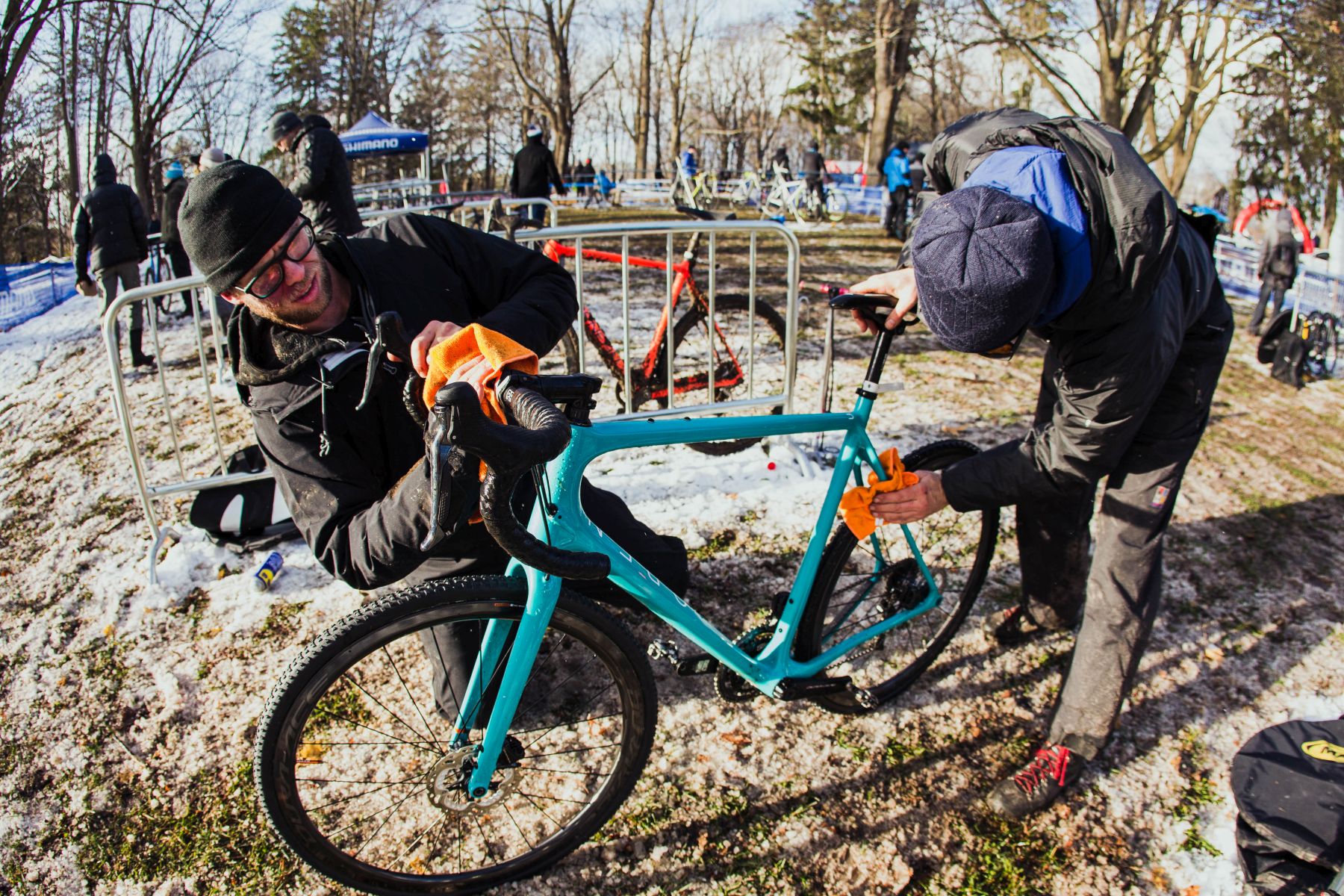Getting your bike clean right after the ’cross race
The proper steps, at the proper times, will keep your bike running smoothly throughout the muddy season

by Nick Di Cristofaro
Cyclocross is a unique cycling discipline that has its own way of causing mechanical havoc to your bike. When the conditions are ideal (no mud!), maintaining your bike CX isn’t much different than cleaning your road machine. But as we all know, the fall/CX season has cold and wet weather making course conditions very messy.

So, you should clean your bike immediately after a cyclocross race. It should go without saying that mud and moisture are not a good combination for your bicycle, especially if you let those elements sit, dry and harden on your bike’s components. Rust and corrosion will follow, making it much more difficult to remove and service parts afterward. It is much easier to clean the machine when the mud is still soft. Once your race is finished, get on your rubber boots and get to work.
Try to scrape off most of the buildup. You can do this with a gloved hand or use a plastic tire lever. Do not use any metal objects or screwdrivers. Often, the race organizers have pressure washers on-site for you to use. These things can be great if you use them properly. You can make quick work of any mud buildup, but you can also damage expensive components at the same time. Sometimes a pressure washer wand will have an adjustable head for setting the stream of water. If this feature is available, use it to dial the pressure way back. Stand a couple of feet away from the bike to spray it. Never take the direct spray right up to your frame or parts. Also, avoid (at all costs!) spraying directly at the following areas of the bike where you want to preserve the grease within: headset, wheel hubs and bottom bracket. Be extra cautious around electronic derailleurs and wiring as well. A high-pressure stream of water can penetrate the seals and ruin the tiny electric motors. You also want to avoid spraying directly on your bar tape, unless you plan on replacing it.
After the quick wash, I always recommend applying some lube on the chain. Spray down the drivetrain components with bike specific lubricant or at the very least WD-40. This step will displace the moisture and prevent corrosion in the short term. Be careful around disc brakes; don’t get any of this stuff on your rotors.

So, you’re done now, right? Not even close. The above steps get the heavy mud off and make it easier to transport your bike home. Also, you don’t want to spend hours with the pressure washer at a race because there will be a lineup of shivering racers waiting for you to finish with the hose. Be courteous and just remove the surface crud and leave the detailed cleaning for a little later. At home, it’s best to hang up your bike from your front wheel, especially if you cleaned and dashed from the race. There will be water in the frame. This position allows the water to drain downwards and out through the seatstays and chainstays. Never hang the bike by the back wheel, with the front touching the ground. Water will drain and sometimes pool in your head tube and ruin your headset.
To get 100 per cent ready for the next race, I recommend a headset and bottom bracket/crank disassembly, inspection and lubing. This process allows you to clean up any remaining moisture. You’d be surprised how much dirt and mud you’ll find inside your BB shell after a muddy event.

Check chain and brake-pad wear. Sometimes brand new pads will become worn in just one event if the conditions are really bad. Check hydraulic lever feel. If its spongy, bleed and flush the system, especially after replacing pads and/or rotors. If you have a mechanical drivetrain, check cable smoothness and housing condition. Replace these parts to restore function or if they are damaged. Pull your cassette off and remove the freehub to clean out mud and moisture and re-lube. Finally, give your wheels a few spins to check for bearing smoothness. Service them if needed. Then, you’re ready to ride around in the mud once again.
